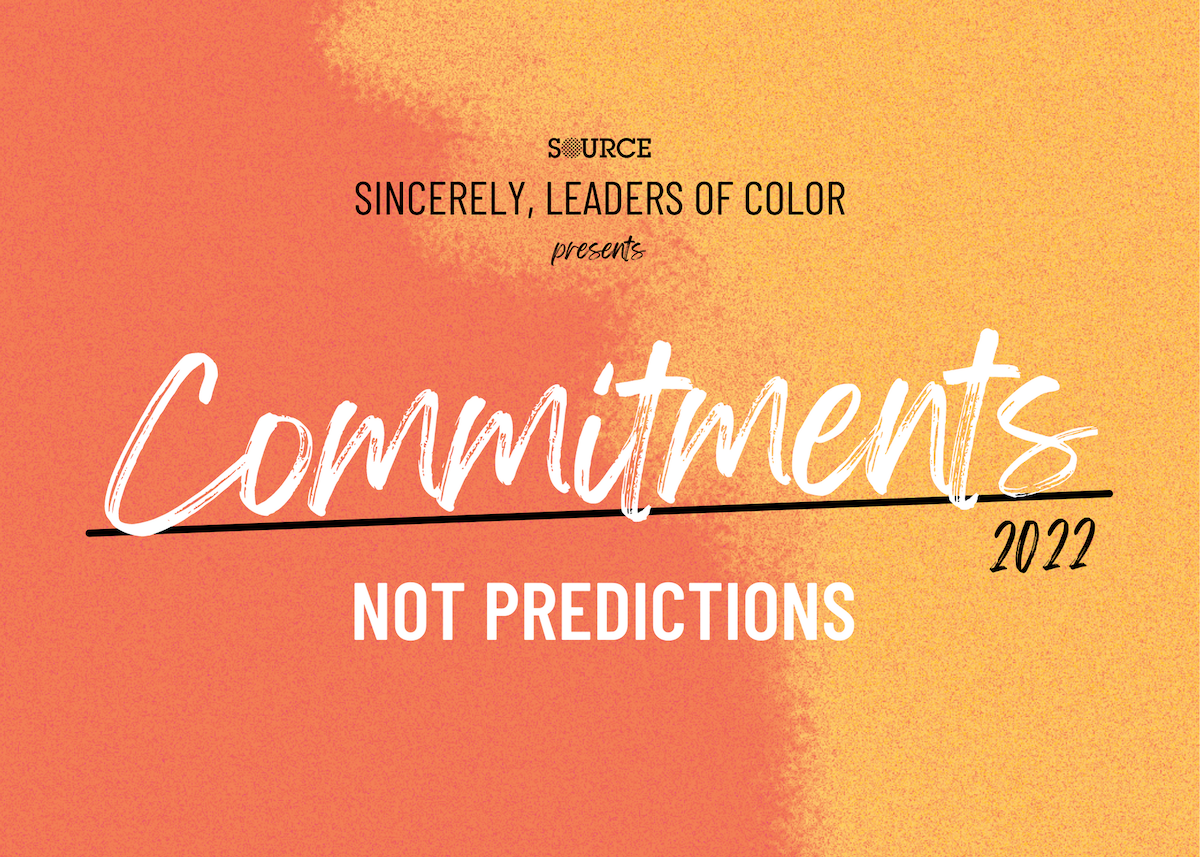Features:
Sincerely, Leaders of Color: It’s time to own our biases
This year, I’m committing to create journalism that reflects and honors the experiences of people in the newsroom — and outside.

Commitments, Not Predictions: As we start 2022, Sincerely, Leaders of Color asked our fellow leaders, allies, and rebels — of all colors — to make commitments and promises for the year ahead, and how they’ll contribute to making safer, healthier newsrooms for all journalists of color. Here’s what they said. This special series is presented with support from The American Press Institute.
If you’re in journalism, you’ve probably heard someone claim to “give voice to the voiceless.” It’s 2022 and I think most of us agree that the general concept here is trite and more than a bit pretentious. Taken figuratively, “voice” in this context can mean ideas, experiences, or perspectives — and everyone has them. Whose ideas, experiences, or perspectives are given a platform or amplified, and why, are just a few of the things we should be interrogating as we aim to tell stories.
As storytellers we decide whose stories we share, who’s centered in any given event, and who we’re writing or creating for. These sources, subjects, and audiences can be from the same communities but they can also be from different ones, so we should know who they are.
This means we shouldn’t be working under the impression that we’re creating journalism for everyone, which is really creating journalism for no one. That’s a mistake we’ve historically made as an industry, defaulting to a false sense of objectivity or neutrality and assuming everyone has the same life experience and is asking the same questions.
But we aren’t all the same. Even as journalists, our differences in life experiences and backgrounds mean our individual lenses on the world are wide ranging. However, we do have one thing in common: We all have biases. It’s a reality I’m heartened to see us, as an industry, acknowledge more and more as the conversation around how we make journalism evolves.
Bringing these two thoughts together: This year I commit to building on what it means to create journalism that values the lived experience, inside and outside of the newsroom.
In the newsroom, this means recognizing the skills and competencies our journalists bring to a story, and acknowledging our biases out loud. This lays the groundwork for better understanding the communities we’re reporting with and aim to serve, and building relationships with them.
So when our reporters head outside of the newsroom, they cover stories, and the people at the heart of them, with empathy. Logistically, it also means creating more touch points and ways for people to engage with our journalism — so when we say we don’t want to be “reporting on” but “reporting with” and “reporting for” communities, it’s because we aim to create space for sources, subjects, and/or audience members to respond to or participate in the work. And what a way to learn more about the folks outside of our newsroom than to work with them.
It’s with these more nuanced approaches and inputs in hand that we can begin to be more intentional — and more strategic — when making editorial decisions. It’s on us to be thoughtful about how a story shapes up, and again, whose voices we see and hear.
At The 19th, I’m thinking about a number of specific tools or initiatives that will help us do even more of this work (I know this crowd loves tangible ideas!):
- Launching and maintaining an ongoing source audit to keep track of who we see and hear
- Learning more about our biases and building cultural competencies through training and collaborative conversation in the newsroom
- Growing our capacity for engaged journalism approaches to create even more touchpoints for our communities, current and prospective
- Exploring events as a very high-touch opportunity with our communities and audiences
Sincerely,
Julia B. Chan
Editor In Chief, The 19th*
Got ideas or examples of similar approaches working elsewhere? Share them with me on Twitter @juliachanb or email me at jchan@19thnews.org.
This is a guest column, solicited by P. Kim Bui and Emma Carew Grovum and edited by Emma and Kim. We want to make sure to include voices from all sorts of backgrounds and experiences. If you’re interested in guest writing, or have someone you’d love to hear from, let us know here.
Organizations
Credits
-
 Julia B. Chan
Julia B. Chan
Julia B. Chan is the editor in chief at The 19th*. A veteran multi-platform journalist, she held newsroom leadership positions at KQED in the Bay Area and at Mother Jones, after spending the first half of her career at Reveal for the Center for Investigative Reporting and before that, the San Francisco Examiner. Julia serves on the board of the Asian American Journalists Association and is a founder of the Journalists of Color Slack. She’s a proud alum of San Francisco State University and Foothill College.




 A Scripted Chat Tool that Anyone Can Use
A Scripted Chat Tool that Anyone Can Use